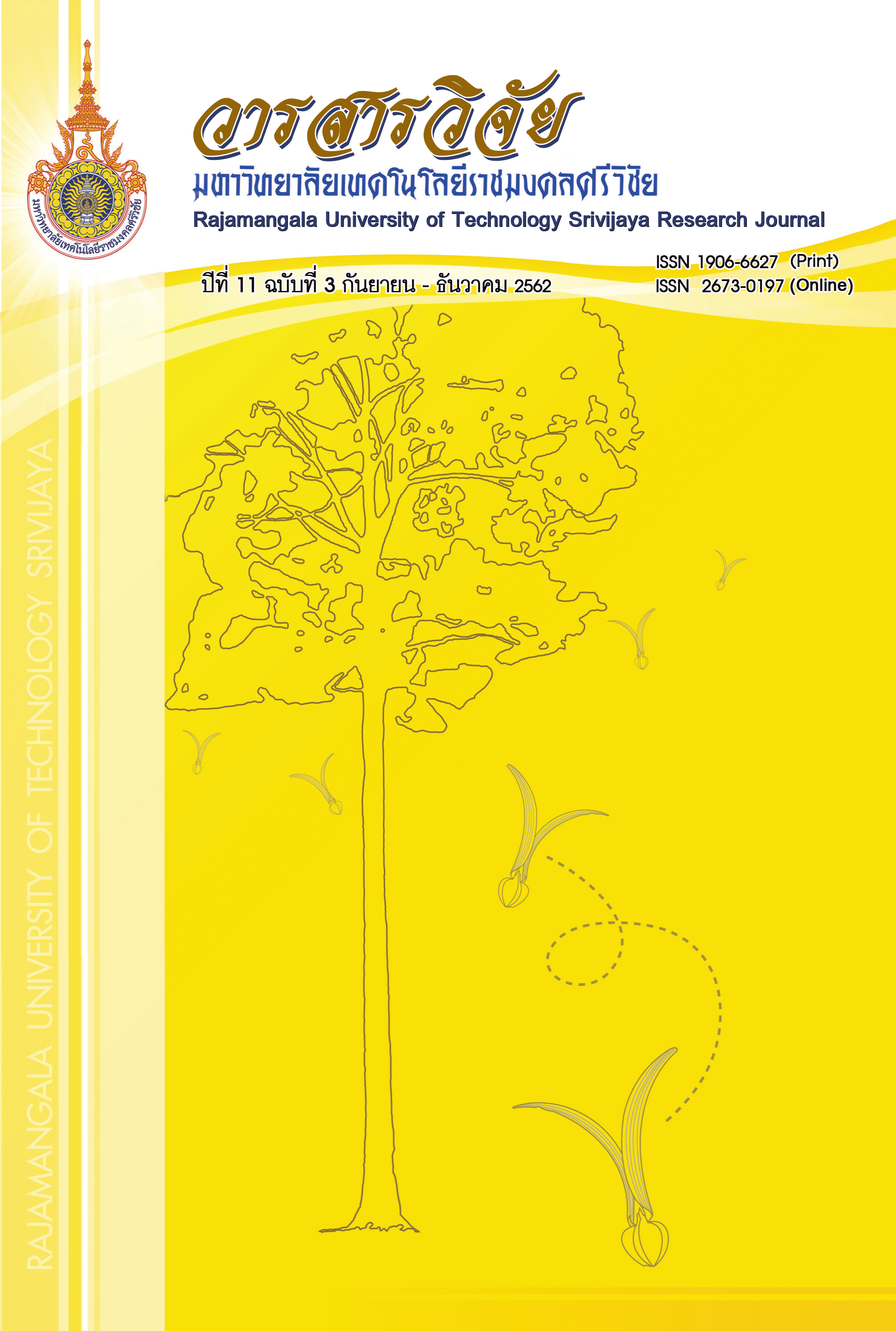Effect of Cepharanthine on the Cytotoxicity of Doxorubicin in Human B-Lymphoma Cells
Main Article Content
Abstract
In this study, we investigated the activity of cepharanthine (CEP), doxorubicin, and combination on cytotoxicity and apoptosis using human lymphoma Ramos cells. Cells were treated with doxorubicin alone or in combination with CEP (10, 20 and 40 µM). Cytotoxic and apoptosis studies were done after 24 h incubations. CEP had cytotoxicity on cells with an IC50 value of 13.77 µM. CEP at concentrations of 10, 20 and 40 µM additively increased the cytotoxic and the apoptotic effects of doxorubicin, leading to a decrease in IC50 (µM) of the drug from 2.55 to 2.20, 1.85 and 1.20, respectively. CEP potentiated cytotoxicity of doxorubicin by increasing apoptotic effects. We conclude that CEP may have beneficial effects in patients with B cell lymphoma treated with chemotherapy.
Article Details
The content and information in the article published in Journal of Rajamangala University of Technology Srivijaya It is the opinion and responsibility of the author of the article. The editorial journals do not need to agree. Or share any responsibility.
References
Chen, Z., Huang, C., Yang, Y.L., Ding, Y., Ou-Yang, H.Q., Zhang, Y.Y. and Xu, M. 2012. Inhibition of the STAT3 signaling pathway is involved in the antitumor activity of cepharanthine in SaOS2 cells. Acta Pharmacologica Sinica 33: 101-108.
Chou, T.C. 2010. Drug combination studies and their synergy quantification using the Chou-Talalay method. Cancer Research 70: 440-446.
Chougule, M.B., Patel, A., Sachdeva, P., Jackson, T. and Singh, M. 2011. Enhanced anticancer activity of gemcitabine in combination with noscapine via antiangiogenic and apoptotic pathway against non-small cell lung cancer. PLoS One 6(11): 1-11.
Ebina, T., Ishikawa, K. and Murata, K. 1990. Antitumor effect of Cepharanthin in the double grafted tumor system. Gan to Kagaku Ryoho Journal 17(6): 1165-1171.
Fang, Z., Li, Y., Chen, Z., Wang, J. and Zhu, L. 2013. Inhibition of Signal Transducer and Activator of Transcription 3 and Cyclooxygenase-2 Is Involved in Radiosensitization of Cepharanthine in HeLa Cells. International Journal of Gynecological Cancer 23(4): 608-614.
Furusawa, S. and Wu, J. 2007. The effects of biscoclaurine alkaloid cepharanthine on mammalian cells: Implications for cancer, shock, and inflammatory diseases. Life Sciences 80: 1073-1079.
Harada, K., Bando, T., Yoshida, H. and Sato, M. 2001. Characteristics of antitumour activity of cepharanthin against a human adenosquamous cell carcinoma cell line. Journal of Oral Oncology 37(8): 643-651.
Harada, K., Ferdous, T., Itashiki, Y., Takii, M., Mano, T., Mori, Y. and Ueyama, Y. 2009. Cepharanthine inhibits angiogenesis and tumorigenicity of human oral squamous cell carcinoma cells by suppressing expression of vascular endothelial growth factor and interleukin-8. International Journal of Oncology 35(5): 1025-1035.
Hennessy, B.T., Hanrahan, E.O. and Daly, P.A. 2004. Non-Hodgkin lymphoma: An update. Lancet Oncology 5: 341-353.
Kudo, K., Hagiwara, S., Hasegawa, A., Kusaka, J., Koga, H. and Noguchi, T. 2011. Cepharanthine exerts anti-inflammatory effects via NF-κB Inhibition in a LPS-Induced rat model of systemic inflammation. Journal of Surgical Research 171(1): 199-204.
Rattanawong, A., Limpanasithikul, W. and Wonganan, P. 2015. Anticancer Effects of Cepharanthine on Human Colon Cancer Cells. KKU Research Journal 15: 68-78.
Rogosnitzky, M. and Danks, R. 2011. Therapeutic potential of the biscoclaurine alkaloid, cepharanthine, for a range of clinical conditions. Pharmacological Reports 63(2): 337-347.
Seubwai, W., Vaeteewoottacharn, K., Hiyoshi, M., Suzu, S., Puapairoj, A., Wongkham, C., Okada, S. and Wongkham, S. 2010. Cepharanthine exerts antitumor activity on cholangiocarcinoma by inhibiting NF-kappa B. Cancer Science 101(7): 1590-1595.
Soni, H., Pandya, G., Patel, P., Acharya, A., Jain, M. and Mehta, A.A. 2011. Beneficial effects of carbon monoxide-releasing molecule-2 (CORM-2) on acute doxorubicin cardiotoxicity in mice: Role of oxidative stress and apoptosis. Toxicology and Applied Pharmacology 253: 70-80.
Vega-Avila, E. and Pugsley, M.K. 2011. An Overview of Colorimetric Assay Methods Used to Assess Survival or Proliferation of Mammalian Cells. Proceedings of the Western Pharmacology Society 54: 10-14.
Wu, J., Suzuki, H., Zhou, Y.W., Liu, W., Yoshihara, M., Kato, M., Akhand, A.A., Hayakawa, A., Takeuchi, K., Hossain, K., Kurosawa, M. and Nakashima, I. 2001. Cepharanthine Activates Caspases and Induces Apoptosis in Jurkat and K562 Human Leukemia Cell Lines. Journal of Cell Biology 82(2): 200-214.
Zhong, Y. 2006. Non-Hodgkin’s lymphoma: What primary care professionals need to know?. Journal for Nurse Practitioners 2: 309-315.

